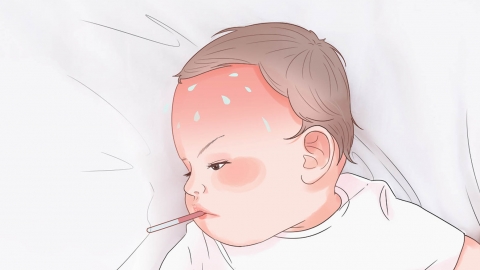Why do children's hands and feet become cold when they have a fever?
Generally, the main reasons why a child's hands and feet become cold during a fever include vasoconstriction during the rising phase of body temperature, underdeveloped peripheral circulation, acute upper respiratory tract infection, acute gastroenteritis in children, and early-stage septic shock. If discomfort symptoms appear, it is recommended to seek timely treatment at a regular hospital. The detailed analysis is as follows:
1. Vasoconstriction during the rising phase of body temperature
In the early stage of fever when body temperature rapidly increases, the body constricts peripheral blood vessels, reducing blood supply to the hands and feet to prioritize blood flow to vital organs such as the brain and heart, resulting in cold hands and feet. At this time, soaking the hands and feet in warm water or gently massaging them can promote blood circulation. Wearing socks and gloves can help keep the extremities warm. Body temperature should be measured every 30 minutes to monitor changes.

2. Underdeveloped peripheral circulation
Children's peripheral blood vessels are small and their circulatory system has not fully matured. During a fever, the heart's ability to pump blood sufficiently to the hands and feet is limited, resulting in cold extremities. Daily activities such as clapping hands or kicking legs can help improve peripheral circulation. Encourage the child to drink more warm water during a fever and elevate the hands and feet to assist blood flow and alleviate coldness.
3. Acute upper respiratory tract infection
Viral or bacterial infections causing upper respiratory tract infections can lead to metabolic disturbances during fever and vasoconstriction of peripheral blood vessels, resulting in cold hands and feet, often accompanied by coughing and nasal congestion. Under a doctor's guidance, medications such as acetaminophen chlorpheniramine granules for children, cefaclor dry suspension, and ribavirin granules may be taken to fight infection and relieve symptoms. Warm towels can be used to wipe the hands and feet to enhance local blood circulation.
4. Acute gastroenteritis in children
Gastrointestinal inflammation caused by bacterial infection leads to fever, and gastrointestinal dysfunction affects systemic blood circulation, reducing blood supply to the extremities, resulting in cold hands and feet accompanied by vomiting and diarrhea. Under a doctor's guidance, medications such as smectite powder, cefixime granules, and oral rehydration salts III may be taken to protect the gastrointestinal mucosa, fight infection, and replenish fluids. Once the inflammation is controlled, the condition of cold extremities will gradually improve.
5. Early-stage septic shock
Severe infections can cause septic shock. In the early stages, the body constricts peripheral blood vessels to ensure blood supply to vital organs, leading to cold hands and feet, often accompanied by lethargy and reduced urine output. Immediate medical attention is required. Under a doctor's guidance, medications such as ceftriaxone sodium for injection, penicillin sodium for injection, and dopamine injection may be used to fight infection, maintain blood pressure, and if organ failure occurs, continuous renal replacement therapy may be necessary.
In daily life, it is important to adjust children's clothing according to weather changes to avoid colds; maintain indoor air circulation to reduce exposure to pathogens; closely monitor the child's mental state and hand and foot temperature during fever, and promptly implement warming and cooling measures; and regularly vaccinate children to enhance immunity.







